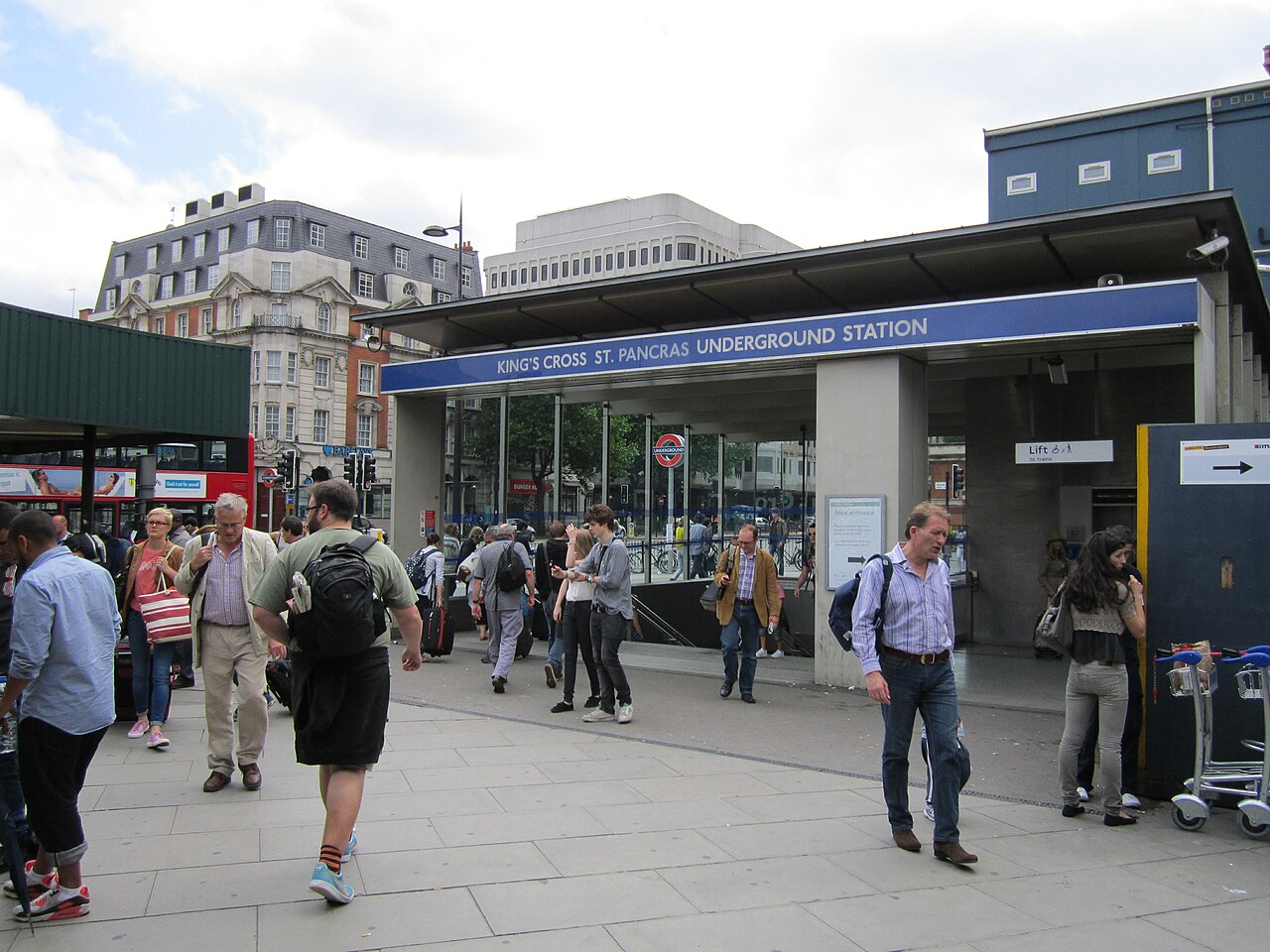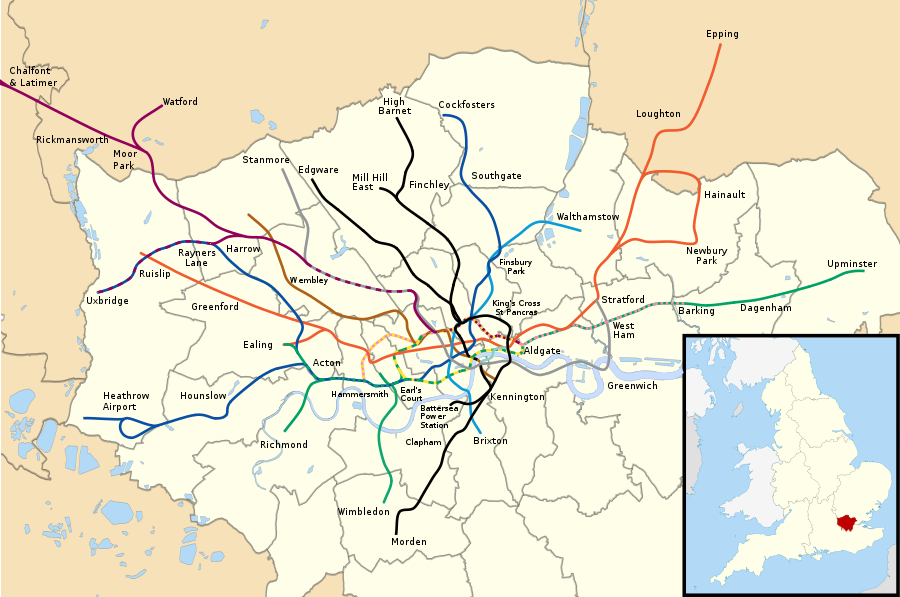Landschlacht, Switzerland, 9 November 2017
I don´t drive.
I never learned how.
(I know….strange for a Canadian adult to say that, eh?)

We own a car.
My wife drives it.
My work takes me to places well outside of reasonable walking distance, so I spend a lot of time on buses and trains.
And as much as I dislike bus travel and loathe the SBB (Schweizerisches Bundesbahnen or Swiss Federal Railways), the one advantage that constant passenger travel offers me is the opportunity to read.

Recently I have been reading Ben Aaronovitch´s Rivers of London, the first in his series of Peter Grant novels.

“Meet DC Peter Grant.
He will show you his city.
But it´s not the capital that you all see as you make your way from tube to bus, from Elephant to Castle.
It´s a city that under its dark surface is packed full of crime.
And of magic.
A city that you never suspected….”
Monday, after a frustrating day at work, I bought myself J. K. Rowling´s The Tales of Beedle the Bard.

Inspired by this purchase, today I bought the British Museum´s Harry Potter: A Journey through the History of Magic.
Just ten days ago I bought at Heathrow Airport a keychain train ticket passage from London to Hogwarts School of Witchcraft and Wizardry, departing from King´s Cross Station´s Platform 9 3/4.

If there is one thing that Aaronovitch and Rowling (the Harry Potter series) and Sir Arthur Conan Doyle (the Sherlock Holmes series) have taught me is that there is much we take for granted and that magic lies just below the surface of what we see.
Just yesterday, I went into Kreuzlingen and Konstanz to get our phone repaired and to do some shopping to change the funky mood I have been in since Monday, and I serendiptiously made some discoveries.
I had lunch in a Japanese café I had not known existed on the Hauptstrasse and was served by a young woman from Newcastle, England.
I visited the Kreuzlingen Tourist Information Centre and I found myself astonished to bring home many brochures and pamplets from my visit.
Later still I found a street in Konstanz that leads from the border post to Rosengartenstraße, offering restaurants previously undiscovered and a second hand shop that gives away free CDs and books from time to time.
So often I think I know a place and then I am surprised by something new that had escaped my previous attention.
As tourists we visit places with preconceptions of places that often are quite different from reality.
From 23 to 29 October, the wife and I visited London and, of necessity, we rode the London Underground with its own magic just under the surface….
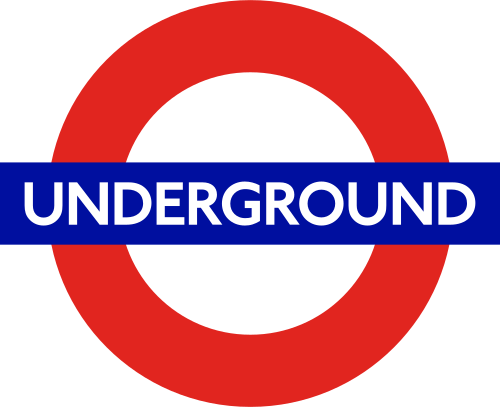
London, England, 23 October 2017
It was inevitable.
First day in London and we were compelled to use the Tube, London´s nickname/brandname for its Underground subterranean railway system.

The world´s first below-ground railway, first began operations in 1863, the Underground handles over 1 billion passengers a year, at an average of 8 million per day, and yet it is not the world´s busiest metro system.
Ten other cities have busier systems with Beijing the busiest.

Though the entire London Underground comprises a total of 250 miles/400 km of track, Shanghai has the longest route system.

Although the Underground has 270 stations, New York City has more.
There are 157 cities in 55 countries that possess a metro system.
This country boy has only ridden the metro systems in 21 cities in 15 countries.
(As fellow Canadian Michael J. Fox commented in the NYC-set 1993 movie The Concierge / For Love or Money, “I take the subway like any other animal.”)

And the idea of having a metro system keeps expanding, with Australian cities like Melbourne and Sydney constructing new metro systems, and even Honolulu getting into the metro scene.
But the London Tube, being the oldest, is the metro system with the longest history of being under attack.
As early as 30 October 1883 (Paddington Station) and as late as 15 September 2017 (Parsons Green), the Tube has been bombed (or has been attempted to be bombed) for over 150 years.
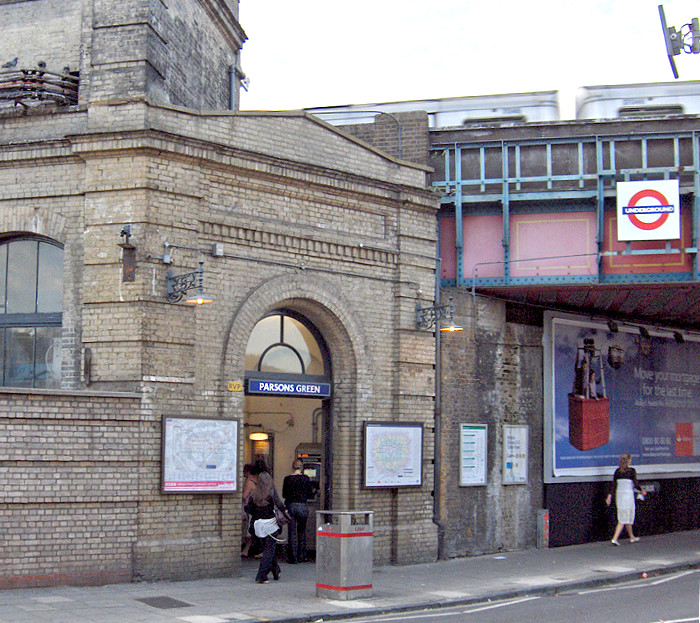
And the memory of the 7/7 Tube attacks in 2005 remains fresh in many people´s minds, when bombs were set off between Aldgate and Liverpool Street stations, Russell Square and Kings Cross St. Pancras stations, and Edgware Road and Paddington stations, and on a double decker bus above ground on Tavistock Road, resulting in the deaths of 52 UK residents of 18 different nationalities* and more than 700 people injured.
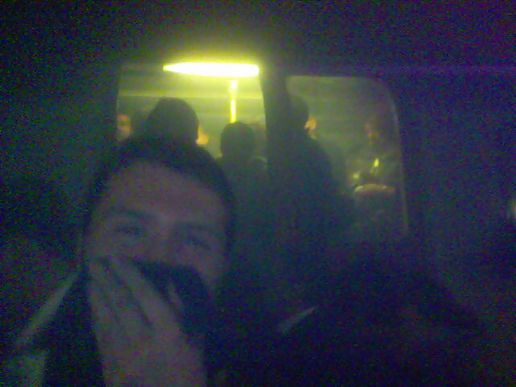
(*Every week 2,000 migrants unload at Victoria Coach Station.

At least 55% of people living in London are not ethnically white British.
There are more people in London with little or no English than the entire population of the city of Newcastle.)
Still Londoners and visitors keep calm and ride the Tube.*
(*Except for, sadly, those who use the Tube to commit suicide.
In the first decade of the new Millennium, there were 643 suicide attempts on the Underground between 2000 and 2010, including successful attempts.
More people commit suicide at King´s Cross and Victoria stations than at any other Tube location.

People who throw themselves under Tube trains are called “one-unders” by the staff.
In New York they call them “track pizza”.)
During the London Blitz in World War II many people used Tube stations as bomb shelters.

Above: Aldwych Tube Station, 1940
A Tube station was never once struck by aerial bombardment.
But on 3 March 1943, after British media reported a heavy RAF raid on Berlin on the night of 1 March, the air raid Civil Defence siren sounded at 8:17 pm, triggering a heavy but orderly flow of people down the blacked-out staircase leading to Bethal Green station from the street.
A middle-aged woman and a child fell over, three steps up from the base and others fell around her, tangled in an immovable mass, which grew as they struggled, to nearly 300 people.
Some managed to get free, but 173 people, most of them women and children, were crushed and asphixiated.
And speaking of Tube air quality, an environmental study in 2000 showed that the air quality of the Tube was 73 times worse than the air quality above ground.
In the heatwave of 2006, temperatures inside the Tube reached the sweltering extreme of 47° Celcius/117° Fahrenheit.
Still Londoners and visitors keep calm and ride the Tube in 26 of London´s 32 boroughs.
Our experience in London left me with an uncertainty of how to feel about the Tube.
It is definitely an odd sensation to stand in a Tube car where no one talks to one another as if talking on the Tube was an silent taboo everyone understood.
Is it a shared misery to ride the Tube wherein one mustn´t complain?
It is certainly an exercise in map-reading and decryption trying to navigate through London´s maze of Underground stations and lines, which always makes me wonder if the architects who designed the entire network were inspired to create a system that resembles multi-coloured strands of twisted spaghetti thrown randomly upon the heart of this great metropolis after nursing hangovers in an Italian restaurant.

It wouldn´t at all surprise me if this were true.
Setting out to explore London on two feet remains the best way to discover the city´s most interesting corners, but above ground navigation can be equally confusing.
As well, the distance between central Tube stations is always further than you think, as the schematic Tube map is very misleading.
So most Londoners find that, except for very short journeys, the Tube is the quickest way to get around and about London.
Eleven different lines cross much of the metropolis, although south of the Thames River is not very well-covered.
Each line has its own colour and name.
All you need to know is which direction you are travelling in: northbound, southbound, westbound, eastbound, unless you are taking the Circle Line then…..well, good luck, mate.
As a precaution, one must also check the final destination displayed on the front of the train, as some lines, such as the District and Northern Lines, have several different branches.
All this complexity which Londoners take simply in stride does this country boy´s head in.
I grew up in a village of less than 500 people and live today in a village with a little more than 700.
There is almost no planning or logistics computation needed to navigate from one end of the village to the other.
Only one city in Switzerland has a metro – surprisingly neither Zurich nor Geneva do – Lausanne, with its two lines and 30 stations, is the smallest city in the world to have such a system.

Above: The logo of the Lausanne Métro
So though I have visited and lived in cities with metro systems, I have never felt at ease zooming at high speed through underground tunnels in overcrowded trains.
Yet despite all this I know there is magic and history to be found in London´s Underground.
Some of the history of the Underground is horrible.
Victorian Londoners were very superstitious.
One preacher, Dr. Cuming, said that digging into the ground would be digging into Hell and the Devil would be disturbed.
(Even today people say the Underground is Hell.)
The first Tube trains ran on 10 January 1863 from Paddington to Farringdon.

So many people got on at the start that there was no room for anyone to get on at the other stations.
(Not a lot has changed since then.)
Steam trains were used for the first 25 years, filling the tunnels with smoke.
The railway companies said the smoke was a good thing.
If you had a bad chest then Tube smoke would clear it.
(….and putting your head on the track will cure your headache.)
Electric trains were first used in 1890.
The law said a person would be fined two Pounds if he/she tried to ride on the roof of an electric train.
If you rode on the roof your head would be knocked off.
Headache gone, two Pounds saved.
To test the first escalators, of which the Tube now has 426, the operators used a man called Bumper Harris to demonstrate that even a man with two wooden legs could use the escalators safely.
The first Tube carriages had no windows and had buttoned seats, looking uncannily similar to the padded cells of insane asylums, which might lead one to question the sanity of riding the Tube.
The tunnels were cleaned at night by ladies with feather dusters, dustpans and brushes.
They were known as “fluffers”!
Many carriages are too small today for many people who travel on the Tube, as the tunnels were built in the 1860s when people were smaller.
And, of course, an old Underground must be rumoured to be haunted.
An actress from the Royal Strand Theatre, knocked down to build Aldwych Station, is said to haunt Aldwych.

(More on Aldwych in a moment…)
Sarah Whitehead became a nun and haunts Bank Station, because she is searching for her brother Philip who was executed in 1811 for forging bank notes.

Above: Entry to Bank Station, in front of the Bank of England
The ghost of Amen-Ra, an Egyptian pharoah who died in about 1500 BC was said to haunt the abandoned British Museum station, because the trains disturbed its eternal slumber.

Wearing only a loincloth and Egyptian headdress, he was said to scream so loudly that the sound would carry down the tunnels to the adjoining Holborn tube station.
The rumour grew so strong that in 1932 a newspaper offered a reward to anyone who would spend the night there.
No one took up the challenge.
The story takes a stranger turn after the closure of the station on 25 September 1933.
The comedy thriller Bulldog Jack, made in 1935, featured a chase through a secret tunnel that led from the station (called Bloomsbury in the film) to the Egyptian Room of the Museum, from where a necklace belonging to Amen-Ra was stolen.
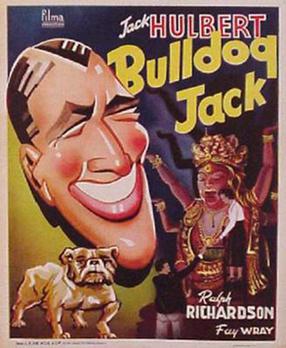
On the very night that the film was released, two women are said to have disappeared from the platform at Holborn – the next station along from the British Museum station.
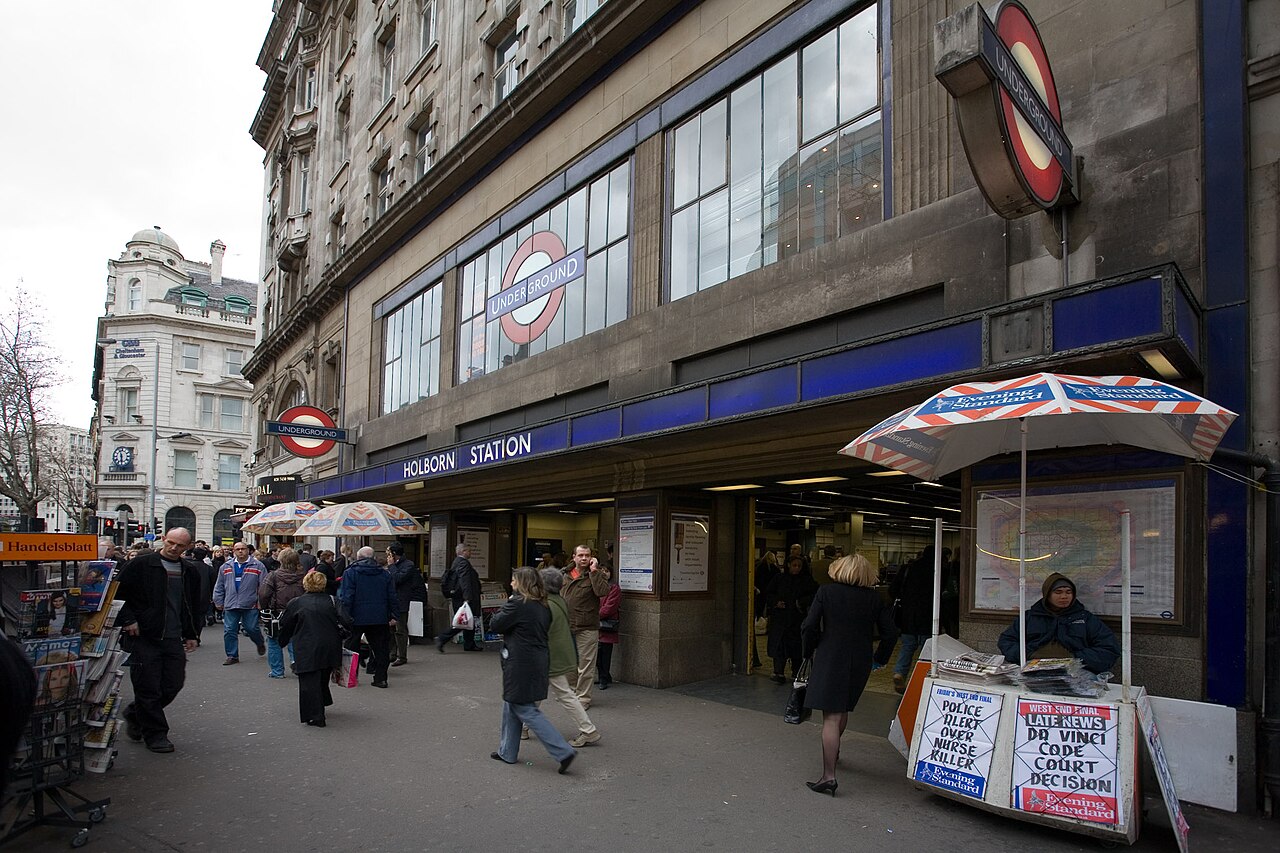
Strange marks were later found on the walls of the closed station.
More sightings of the ghost were reported, along with weird moanings from within the tunnels.
London Underground has always denied the existence of a tunnel from the station to the Egyptian Room.
The actor William Terriss was stabbed to death in 1897 and is said to haunt the Covent Garden station.

Above: William Terriss (1847 – 1897)
One can hear the tapping of footsteps and doors flung open at the Elephant and Castle station.

“The Screaming Spectre” of Anne Naylor, who was murdered and chopped to pieces by her mistress in 1758, is said to haunt Farringdon Station.
There is no Tube station at Muswell Hill as there is supposed to be, as construction workers came across a deep pit full of the skeletons of people buried during the Plague.
And there are, of course, the urban legends with just enough truth in the telling to make the tales believable.
An art student, a woman was travelling on the Underground back to her campus from central London late at night – she no remembers which line – alone except for one other person – a man in his 30s – in an empty carriage when three people boarded – she can´t recall which station – and sat opposite her.
The art student decided that the trio looked like drug addicts and avoided making eye contact with them.
Then the 30-something man started acting strangely.
He walked over to the student and behaved as if he knew her, asking:
“Hi. How are you? I´ve not spoken to you in a long time.”
….before leaning into her and whispering:
“Get off at the next stop.”
The student was wary of this, but did not wish to be left alone on the train with what she thought were three drug addicts, so she followed the man off the train and onto the platform.
Once they were off the train, the man revealed to the student that the girl in the trio was dead.
He had seen the two men drag her onto the train with a pair of scissors embedded in the back of her skull.
The story of the corpse on the train….simply an urban legend….just a horror story about travelling with strangers in enclosed spaces?
People do die on London´s public transport.
There are instances when bodies have been found on the Tube, if rumour and gossip are to be believed.
A train arrived at the East Finchley station at the end of the morning peak time.
The crew inspected the train and found a man slumped in a seat, who they tried to wake.
They discovered that the man was dead, and had been for so long that rigor mortis had set in and he was rigid in his seat.
The body had to be removed by being laid sideways on a stretcher to prevent it rolling off.
While rigor mortis begins three to four hours after death – so it was possible after the morning peak – maximum stiffness does not set in until around twelve hours.
It is possible the body was left overnight on the Tube.
On the eastbound Piccadilly Line at Southfields, a passenger raised the alarm when a man on the packed train seemed “a bit poorly”.

The guard did not wish to delay the train so he persuaded a couple of passengers to help him drag the corpse off the train and left it sitting upright on a bench.
The police were called and complained about the disrespectful treatment of a body.
The guard then responded with:
“What else could I do? I couldn´t delay the train, could I?”
121 Westminster Bridge Road was once the site of London´s strangest railway station – the terminus of the Necropolis Railway, which operated between 1854 and 1941.

In the mid-nineteenth century, cemetery spaces in London were becoming increasingly limited due to the rapid increase in population and the legacy of the cholera outbreaks of recent years.
So, in an effort to find a solution, Richard Bourn started the Necropolis Railway Company.
A station was first set up in York Street, opposite Waterloo, from where trains could transport the London dead to Brookwood Cemetery in Surrey.

When Waterloo was expanded at the turn of the 20th century, the Necropolis line had to be relocated to allow more room for regular train services, so a new terminus was opened in Westminster Bridge Road in 1902.
The railway was divided both by class and by religion with 1st, 2nd and 3rd class tickets for each.
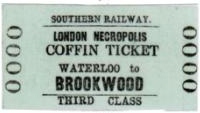
These class divisions didn´t just apply to the travelling mourners; they also affected the style in which the deceased travelled, with more ornate coffins and storage compartments for 1st class, while in 3rd class the plain coffins were stacked up and crammed into a hearse carriage.
On arrival at the terminus, mourners would be led to an appropriate class waiting room, while the coffin was discreetly unloaded from the hearse and sent to platform level by lift.
At its peak, 50 corpses a day were transported along this line.
One of the more notable bodies to be carried by the train was that of Friedrich Engels, the German socialist political theorist and philosopher, who died in London on 5 August 1895.

Above: Friedrich Engels (1820 – 1895)
Engels had expressed a wish to be cremated and for his ashes to be cremated at sea, but at the time there was no crematorium near London, so he was taken first to Brookwood, then on to Woking Crematorium.
By the 1930s London had more cemeteries and crematoria of its own, so the service was reduced to two trains a week.
During the Second World War the station was heavily damaged in an air raid, which brought the Necropolis Railway to a halt.
The repair work was not seen as financially worthwhile, so at the end of the War the station building was sold as office space.
The track to the cemetery was removed in 1947.
As previously stated above, there are 267 tube stations in operation.
Twenty-one have been taken offline since 1900.
Most of them were closed when London Transport was created in 1933, merging several independent transit operators who had been stations very close to each other to compete for passengers.
Some were a real loss for commuters, while others had just been badly designed.
Most of these ghost stations have been abandoned or walled up.
Visiting these ghost stations is largely impossible.
Closed since 1994, the ox-blood red brick facade of Aldwych Underground still stands on the corner of the Strand and Surrey Street.
During WW II, Aldwych was used as an air raid shelter, while treasures from the British Museum were stashed away in the tunnels.
Today, the abandoned station is often featured in films (Patriot Games, Die Another Day, V for Vendetta).

Access to the public is denied, but visits can sometimes be arranged through the London Transport Museum.
I suspect that most of the millions who ride these rails every day, year after year, neither know nor care about corpses, ghosts or ghost stations, and they choose not to remember the Tube´s history of being attacked.
With Oyster Cards firmly in hands and a bland uncaring resigned look on their faces, London passengers keep calm and carry on with their journey, reading one of the many free papers distributed at many central London stations, looking down at their mobile electronic gizmos or grimly staring off into the distance at the space between spaces.
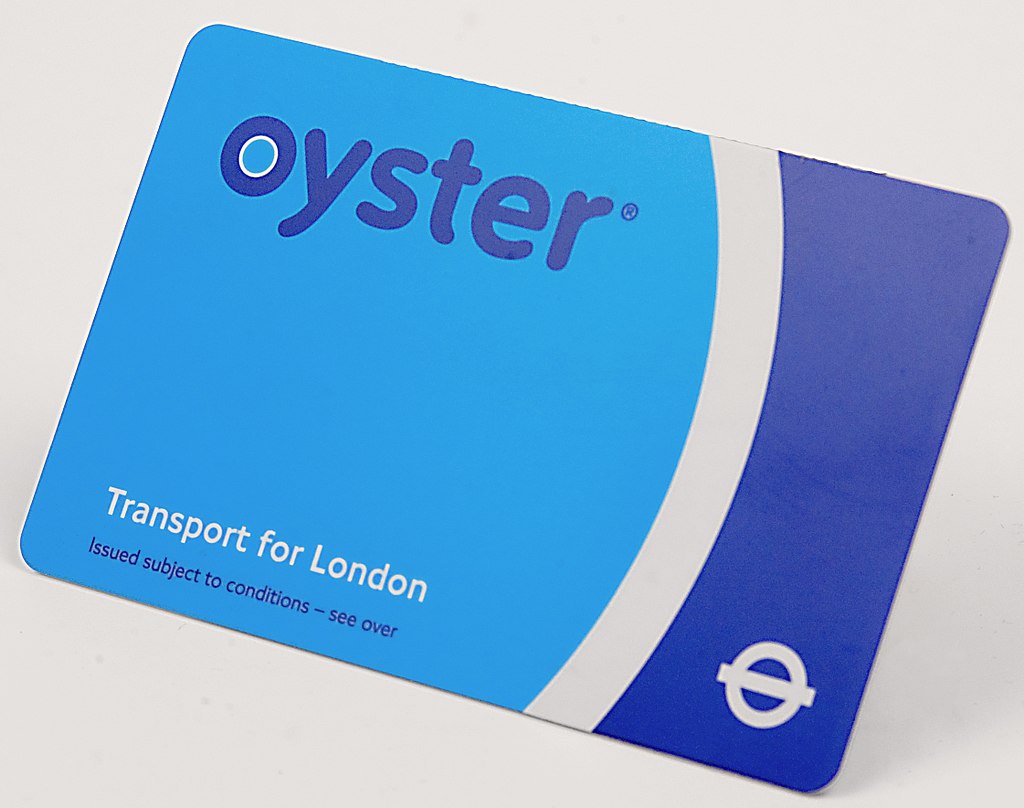
(The Oyster Cards, “smart” cards that register your entry and exit from tube stations and debit your travel account accordingly, are named after the idea that “the world is your oyster”, that the world is just waiting to be discovered like a pearl of great value.)
Our first Tube ride together took us from Paddington Station to Piccadilly Circus (on the Bakerloo Line via Edgware Road, Marylebone, Baker Street, Regent´s Park and Oxford Circus) to pick up our Internet-ordered London Passes from the Tourist Information Kiosk at Leicester Square.
We encountered no corpses, no ghosts, no ghost stations then nor during our seven-day sojourn in London.
We never felt threatened nor nervous about being attacked either above ground or below it.
We ate well, drank well and had a merry old time.
We used the Tube, because it was convenient, but like a marriage of convenience, there was not much love felt for the experience.
Perhaps there is magic beneath the streets of London, a world of possibility behind the sliding doors of the Tube carriages.
I honestly can´t say I felt it within the crowded, friendless confines of a speeding carriage hurtling its way through dark and damp tunnels.
I quickly lost count of how many staircases I climbed, how many times I used my Oyster Card, how often I felt confused by the complexity and tangle of train maps and schedules, how many miles I walked without seeing the sun or the stars or feeling fresh air against my face.
Perhaps the Tube is a part of London life, but it is a life that I cannot eagerly embrace, for one doesn´t ride the Tube as much as one haunts it.
Like a ghost that cannot leave until its goal is realised, one cannot abandon the use of the Underground until one´s destination is reached.
Rail romance has been replaced by Underground urgency.
Without travelling companions or time restrictions, I would rather walk.
Too much of modern day reality is rushed and packaged.
A free man prefers to walk.
Sources: Wikipedia / Google / The Rough Guide to London / Terry Deary, Horrible Histories London / Rachel Howard and Bill Nash, Secret London: An Unusual Guide / Ben Judah, This Is London: Life and Death in the World City / Simon Leyland, A Curious Guide to London: Tales of a City / Scott Wood, London Urban Legends: The Corpse on the Tube and other stories


